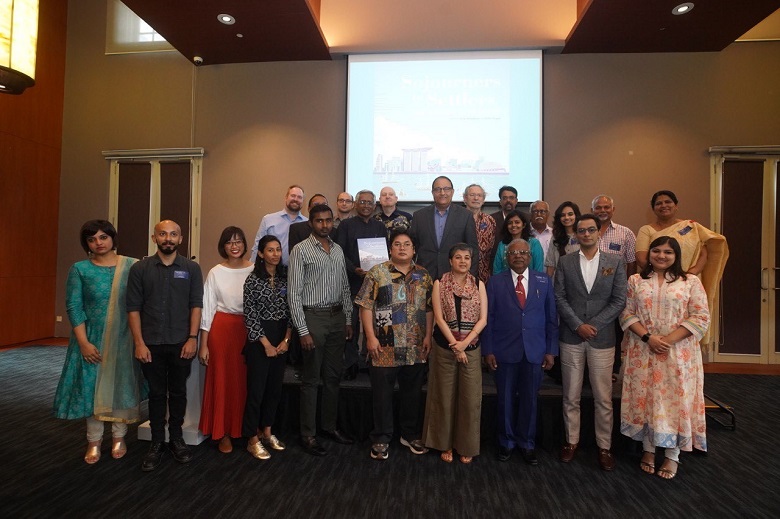New book traces Tamil community's presence in region dating back 2,000 years
Sign up now: Get ST's newsletters delivered to your inbox

Minister for Communications and Information S Iswaran (centre) with editors and contributors of "From Sojourners to Settlers - Tamils in Southeast Asia and Singapore" and staff from The Indian Heritage Centre.
PHOTO: MINISTRY FOR COMMUNIATIONS AND INFORMATION
Follow topic:
SINGAPORE - A newly launched publication has traced the Tamil community's presence in Singapore and South-east Asia back 2,000 years.
The Indian Heritage Centre's From Sojourners To Settlers - Tamils in Southeast Asia and Singapore was launched on Saturday (Dec 7) by Minister for Communications and Information S. Iswaran at the Asian Civilisations Museum.
"The Tamil community in Singapore is clearly identifiable but not easily definable and any attempt to do so is fraught with challenges ranging from semantics to politics," said Mr Iswaran, referencing a quote from the book.
Co-published by the heritage centre and the Institute of Policy Studies, the book explores lesser-known aspects of Tamil history and heritage in Singapore and South-east Asia, examining evidence of Tamil connections with the region for more than 2,000 years.
Among evidence looked at are the inscriptions on the Singapore Stone, which some experts date back to the 10th century.
A key artifact in Singapore's National Collection, the Singapore Stone was formerly located at the mouth of the Singapore River, before the British destroyed it with dynamite in 1843.
Researcher Iain Sinclair, a contributor to the book, recently identified the phrase "kesariva" in the inscriptions found on parts of the Singapore Stone.
He said it could be part of the word "parakesarivarman" - a title used by several Chola kings of the Chola dynasty, a Tamil dynasty of southern India and one of the longest-ruling in history.
The finding suggests a Tamil presence in the Strait of Singapore dating back 1,000 years.
Mr Iswaran, who was a guest of honour at the event, addressed the efforts by early Tamil pioneers in shaping Singapore's identity and laying the foundations of contemporary Tamil culture and practice in the city-state.
"Colonial Singapore was a microcosm of India's diverse cultural background and landscape - its vast, seemingly endless range of sub-ethnicities and linguistic groups," he said.
He noted that Tamil Muslims established Singapore's first vernacular press while Indian merchants and moneylenders, including the South Indian Chettiars, were the source of credit and banking before the advent of European banks in the 19th century.
"Today, Tamil is one of our four official languages, and community and state-supported efforts to promote the Tamil language and culture continue with vigour," he said.
"Tamil Singaporeans, who constitute a majority of the Indian population in our nation, are a vibrant and diverse community, who continue to play an important role in shaping Singapore's future."
The book launch was held in conjunction with the heritage centre's latest special exhibition - "From the Coromandel Coast to the Straits: Revisiting our Tamil Heritage", which will run from Nov 23 to June 30, 2020.
Admission to the exhibition at the Indian Heritage Centre is free for Singaporeans and permanent residents.

